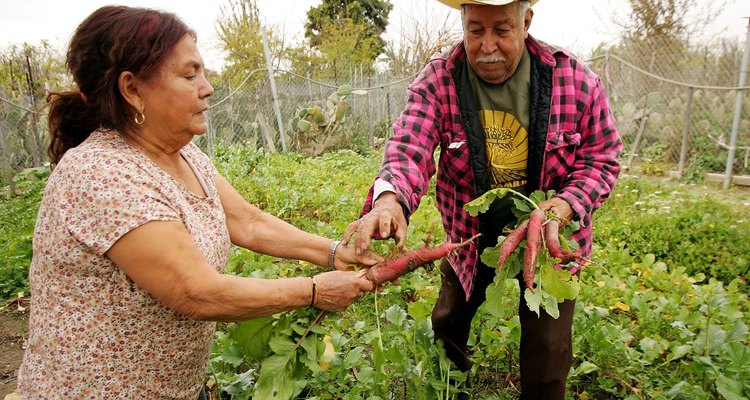
David McNew/Getty Images News/Getty Images
The Maya civilization dates from the pre-classic period spanning from 2000 B.C. mainly centered in the Yucatan of current-day Mexico. Agriculture was the foundation of the Maya civilization. Little was known of the diet of the ancient Maya people until archaeologists discovered a 1,400-year-old Maya farm preserved in volcanic ash in 2007 that answered some questions relating to how the Maya diet was able to support large populations.
Identification
Besides occupying the Yucatan, Maya groups lived in northern Veracruz, Tabasco and the highlands of Guatemala. Their culture was the greatest civilization among the original cultures of the Western hemisphere, says Minnesota State University website. The Mayans were not unified under one empire and had politically independent states.
Traditional Diet
The Maya people cultivated primarily maize and beans as well as squash, pumpkin, chili peppers, sweet potato, tomatoes and various kinds of fruit trees. Food was stored underground and in above-ground wooden cribs, according to the Authentic Maya website. For a protein, they prepared maize in a number of different ways, including atol, a corn-meal gruel eaten with chili pepper; posol, a mixture of water and sourdough for sustenance while working in the fields; and tamal, usually mixed with chili, meat and Mayan spinach, a high-protein herb native to Guatemala. Basic foods were meat and vegetable stews with added squash seeds and peppers. Additionally deer, armadillo, rabbits, fish and seafood, birds, mice and rats, wasp larvae and snails were consumed. According to Bainbridge College, meat contributed little to the Maya diet before the Spanish introduced pigs, cattle, turkey and chickens.
Modern Diet
The diet of the contemporary Guatemalan Maya people remains traditionally vegetarian in the rural and poverty-stricken areas. The Maya basic food supply still includes indigenous species of vegetables and animals. The people continue with many of their traditional farming practices although they have adapted to changes in population, culture, climate, economic system and availability of synthetic fertilizers and pesticides.
Protein Sources
Mayans obtain their source of protein primarily from corn, beans and squash, planted together so the taller plants can shade the ones below. The versatile corn is used to make a variety of foods such as their staple tortillas, a round, flat cornmeal cake; tacos, a corn tortilla eaten with a filling; quesadillas, melted cheese in a tortilla; and tamales, stuffed and steamed corn dumplings, says Bainbridge College.
Corn as a Staple
Corn comprises as much as 75 percent of the modern Maya diet, so it was assumed that corn constituted 75 percent of the ancient Maya diet and it was believed that maize was the primary agriculture. However, evidence from analysis of human skeletal material found in ancient the site in Cerén, El Salvador, showed that maize was not as important in the early pre-classic villager’s diet, according to Authentic Maya. Maize consumption varied, even within the same villages, and corn may not have predominated during the pre-classic era when there was a lower population density and wild animals were plentiful. During that time, there was a mixed economy of cultivated plants and the Maya may have relied on yucca, manioc or cassava rather than maize.
Manioc
The significance of maize as a staple in the Maya diet has risen questions as to how corn alone could provide enough sustenance to maintain their civilization. Archaeological findings at the field in El Salvador, produced evidence that manioc was also cultivated as early as 600 A.D. Manioc produces large tubers that are rich in carbohydrates. The discovery was made because the ancient crops of cultivated manioc roots had been preserved in holes sealed by volcanic ash.
Related Articles

The History of Butternut Squash
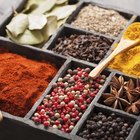
Traditional English Diet

Staple Foods in Africa
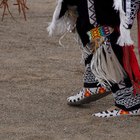
Hopi Indian Foods

History of African Peanut Soup

Neolithic Diets
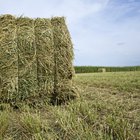
Alfalfa Hay Nutrition Information

The History of Polyester Fabric

African Food Facts
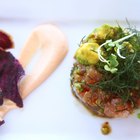
Traditional Hawaiian Diet

Traditional Clothing in Hawaiian Culture

What Is Indiana's State Food?

The Essenes Diet

What Is a Cowboy Breakfast?

Food Recipes of Ancient Egypt
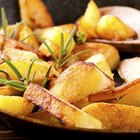
What Foods Do People in Ireland Eat?

Fruits or Vegetables Starting With X

What Is a Tiki Party?

What Is Swallow's Nest Soup?

History of Mardi Gras Beads
References
Writer Bio
Gord Kerr's professional background is primarily in business and management consulting. In 1991, Kerr started writing freelance for a small local newspaper, "The Summerland Review," and a leading sailing publication, "Cruising World Magazine." Kerr has a Bachelor of Business Administration degree from Wilfred Laurier University.
Photo Credits
David McNew/Getty Images News/Getty Images